Your home should be a safe space—but occasionally, it can harbor hidden dangers that are best left to professionals. From certain types of venomous wildlife to toxic mold, it’s important to know what to avoid and how to respond safely.
This guide explores potentially harmful household encounters backed by verified information from health and environmental agencies. When in doubt, remember: Don’t touch—get help.
1. Brown Recluse Spider (Loxosceles reclusa)
While many household spiders are harmless, the brown recluse spider is one species that poses medical concern. Found primarily in the Midwestern and Southern United States, it typically hides in dark, undisturbed areas such as closets, basements, attics, and behind furniture.
The brown recluse can be identified by a distinct violin-shaped marking on its back. Although bites are rare and usually occur when the spider is accidentally pressed against skin (e.g., while dressing), they can cause localized tissue damage and, in rare cases, systemic symptoms.
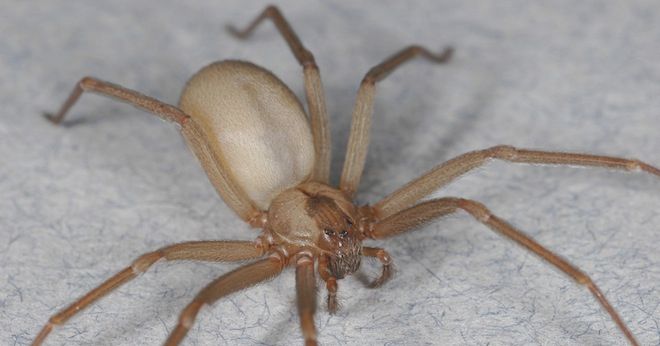
What Experts Say:
According to the Centers for Disease Control and Prevention (CDC), the reaction to a brown recluse bite varies widely. Some bites may heal without intervention, while others may lead to serious skin necrosis. Immediate medical attention is recommended if you suspect a bite.
What to Do:
Do not attempt to kill or capture the spider.
Contact pest control professionals for proper identification and management.
If bitten, seek medical attention promptly.
2. Coral Snake (Micrurus spp.)
In warmer regions such as the Southeastern United States, the coral snake is another rare but serious threat. These snakes are brightly colored with bands of red, yellow, and black, and while reclusive and non-aggressive, they are among the most venomous snakes in North America.
Due to their similar appearance, coral snakes are often confused with non-venomous lookalikes, such as the scarlet kingsnake. However, attempting to distinguish them during an encounter is not recommended.

What Experts Say:
The Florida Museum of Natural History advises that coral snake bites are uncommon, but the neurotoxic venom can cause serious health complications if not treated with antivenom.
What to Do:
Do not approach or handle any snake indoors or outdoors.
Call animal control or a licensed wildlife removal service.
In the event of a bite, seek emergency medical care immediately.
3. Black Mold (Stachybotrys chartarum)
Black mold is a type of toxic fungus that can appear in homes with excessive moisture, especially following water damage, flooding, or plumbing leaks. It often looks like dark greenish-black patches and can emit a strong musty odor.
Long-term exposure to black mold may cause respiratory issues, particularly for individuals with asthma, allergies, or weakened immune systems.

What Experts Say:
According to the U.S. Environmental Protection Agency (EPA), mold can cause a variety of health effects. It is especially concerning for young children, the elderly, and people with pre-existing respiratory conditions.
What to Do:
Do not attempt to clean black mold with bleach or household cleaners—this can release harmful spores into the air.
Contact a certified mold remediation specialist for inspection and safe removal.
Address the underlying moisture problem to prevent future growth.
4. Suspicious Packages or Devices
While extremely rare, there have been isolated incidents involving suspicious packages or unknown devices left on porches, in mailboxes, or near entryways. These may pose risks if they contain unidentified substances or tampered components.
What Experts Say:
The U.S. Postal Inspection Service (USPIS) advises the public to be vigilant about packages without return addresses, excessive postage, or unusual smells or stains. While most unexplained packages are harmless, caution is always advised.
What to Do:
Do not touch, open, or move the item.
Clear the area and keep others away.
Call local law enforcement or the postal inspection service immediately.
Why Caution Matters
Your home may seem secure, but unintentional exposure to venomous species, toxins, or suspicious materials can have serious consequences. These threats are rare, but when they do occur, your response time and method are crucial.
Trying to remove a spider, snake, or mold growth yourself may:
Worsen the situation
Expose you to bites, toxins, or respiratory hazards
Delay professional intervention
In all of these cases, the safest course of action is to:
Remain calm
Keep a safe distance
Call qualified professionals
Final Thoughts: When in Doubt, Call for Help
Whether it’s a potentially venomous spider, a mysterious mold patch, or an unfamiliar package, your safety should always come first. Never let curiosity override caution. Even seemingly minor situations can carry hidden risks.
The key takeaway?
If you encounter something unusual, don’t touch it—get professional assistance.
By staying informed and prepared, you can make your home not only more comfortable—but also safer for everyone inside.
This guide explores potentially harmful household encounters backed by verified information from health and environmental agencies. When in doubt, remember: Don’t touch—get help.
1. Brown Recluse Spider (Loxosceles reclusa)
While many household spiders are harmless, the brown recluse spider is one species that poses medical concern. Found primarily in the Midwestern and Southern United States, it typically hides in dark, undisturbed areas such as closets, basements, attics, and behind furniture.
The brown recluse can be identified by a distinct violin-shaped marking on its back. Although bites are rare and usually occur when the spider is accidentally pressed against skin (e.g., while dressing), they can cause localized tissue damage and, in rare cases, systemic symptoms.

What Experts Say:
According to the Centers for Disease Control and Prevention (CDC), the reaction to a brown recluse bite varies widely. Some bites may heal without intervention, while others may lead to serious skin necrosis. Immediate medical attention is recommended if you suspect a bite.
What to Do:
Do not attempt to kill or capture the spider.
Contact pest control professionals for proper identification and management.
If bitten, seek medical attention promptly.
2. Coral Snake (Micrurus spp.)
In warmer regions such as the Southeastern United States, the coral snake is another rare but serious threat. These snakes are brightly colored with bands of red, yellow, and black, and while reclusive and non-aggressive, they are among the most venomous snakes in North America.
Due to their similar appearance, coral snakes are often confused with non-venomous lookalikes, such as the scarlet kingsnake. However, attempting to distinguish them during an encounter is not recommended.

What Experts Say:
The Florida Museum of Natural History advises that coral snake bites are uncommon, but the neurotoxic venom can cause serious health complications if not treated with antivenom.
What to Do:
Do not approach or handle any snake indoors or outdoors.
Call animal control or a licensed wildlife removal service.
In the event of a bite, seek emergency medical care immediately.
3. Black Mold (Stachybotrys chartarum)
Black mold is a type of toxic fungus that can appear in homes with excessive moisture, especially following water damage, flooding, or plumbing leaks. It often looks like dark greenish-black patches and can emit a strong musty odor.
Long-term exposure to black mold may cause respiratory issues, particularly for individuals with asthma, allergies, or weakened immune systems.

What Experts Say:
According to the U.S. Environmental Protection Agency (EPA), mold can cause a variety of health effects. It is especially concerning for young children, the elderly, and people with pre-existing respiratory conditions.
What to Do:
Do not attempt to clean black mold with bleach or household cleaners—this can release harmful spores into the air.
Contact a certified mold remediation specialist for inspection and safe removal.
Address the underlying moisture problem to prevent future growth.
4. Suspicious Packages or Devices
While extremely rare, there have been isolated incidents involving suspicious packages or unknown devices left on porches, in mailboxes, or near entryways. These may pose risks if they contain unidentified substances or tampered components.
What Experts Say:
The U.S. Postal Inspection Service (USPIS) advises the public to be vigilant about packages without return addresses, excessive postage, or unusual smells or stains. While most unexplained packages are harmless, caution is always advised.
What to Do:
Do not touch, open, or move the item.
Clear the area and keep others away.
Call local law enforcement or the postal inspection service immediately.
Why Caution Matters
Your home may seem secure, but unintentional exposure to venomous species, toxins, or suspicious materials can have serious consequences. These threats are rare, but when they do occur, your response time and method are crucial.
Trying to remove a spider, snake, or mold growth yourself may:
Worsen the situation
Expose you to bites, toxins, or respiratory hazards
Delay professional intervention
In all of these cases, the safest course of action is to:
Remain calm
Keep a safe distance
Call qualified professionals
Final Thoughts: When in Doubt, Call for Help
Whether it’s a potentially venomous spider, a mysterious mold patch, or an unfamiliar package, your safety should always come first. Never let curiosity override caution. Even seemingly minor situations can carry hidden risks.
The key takeaway?
If you encounter something unusual, don’t touch it—get professional assistance.
By staying informed and prepared, you can make your home not only more comfortable—but also safer for everyone inside.
At least 33 people were killed and nearly 20 injured after a fatal accident involving a passenger bus that crashed and fell into a ravine on its way to the Peruvian capital, Lima.

This incident occurred early Tuesday morning and involved a León Express bus traveling from the city of Huánuco, in the central jungle, toward Lima. The bus crashed at kilometer 72 on the central highway.
The car crashed into a hill and fell into a ravine more than 100 meters deep, landing just a few meters from the RÃmac River.
Regarding the death toll, the National Police reported Tuesday that there were at least 17 people, and hours later, the death toll rose. So far, according to Colonel Manuel Lozana, head of the Highway Police, the death toll has reached 33.

This incident occurred early Tuesday morning and involved a León Express bus traveling from the city of Huánuco, in the central jungle, toward Lima. The bus crashed at kilometer 72 on the central highway.
The car crashed into a hill and fell into a ravine more than 100 meters deep, landing just a few meters from the RÃmac River.
Regarding the death toll, the National Police reported Tuesday that there were at least 17 people, and hours later, the death toll rose. So far, according to Colonel Manuel Lozana, head of the Highway Police, the death toll has reached 33.
He was the ideal husband—until I heard her voice one day when I arrived home early. Instead of screaming or crying, I just laid the table and began organizing my big surprise.
David and I appeared to be the type of couple that others admired. After 16 years of marriage, we had three children who enjoyed backseat sing-alongs and Sunday breakfasts. But on that fateful Friday afternoon, everything changed.
With a front yard that blossomed in every season and a porch swing, David and I lived in a tiny suburban neighborhood on a tree-lined block. I stayed at home with the kids while David worked a steady job in insurance.
Our life together was so idyllic that it could have been featured on a Christmas card. Like clockwork, we used our matching “His & Hers” coffee mugs every morning. “You’re so lucky; he’s such a family man.” was something people used to say, and I believed them. I really did.
David was the type of guy who would put handwritten messages in my lunch, open jars for me, and warm up my car on cold mornings. He kissed my forehead every night, sent flowers on my mother’s birthday, and never failed to remember anniversaries.
My spouse gave me a sense of security, as if I had made the correct decision in a world when many others did not. After our second kid was born, he persuaded me to resign from my job, claiming that our family “needed stability” and that I deserved a break. I used to look at him and think, “This is it. This is the good stuff.” I found it endearing, encouraging, even.

https://dailypositiveinfo.com/wp-content/uploads/2025/11/image-1147.png
I never considered asking him a question. Not once.
It was a typical Friday that altered that.
It began like any other blur at the end of the week. After dropping the kids off at school and running a few errands, I discovered that I had neglected to buy milk. Before I picked Sam up from his piano lesson, I decided to grab it and drop off the bags at the grocery shop, so I doubled back.
It was just a normal part of the beat, nothing out of the ordinary.
However, I first noticed the silence before entering the house earlier than I had intended. Before your intellect could catch up, the silence made your stomach turn.
Then, from down the corridor, I heard the faint sounds of a man and a woman before I opened the door. The woman’s voice was light, flirtatious, higher-pitched, giggly, and all too familiar, yet I immediately recognized David’s—easy and relaxed.
I thought he was on the phone at first. Then I heard it:
“Oh, please, you just like forbidden things, big brother.”
My entire body went still.
That voice seemed familiar to me. Mia owned it.
She was my half-sister, age 26. All vision boards pasted over her mirror, pouty selfies, and bronzed skin. She worked as a tarot reader, dog groomer, yoga instructor, and anything else made her feel “aligned with her higher self.”
She claimed to be a life coach, although she had never worked at a job longer than a TikTok video and was unable to pay for her own auto insurance.
Mia was always… excessively. She is too kind with her embraces and too giddy with my spouse. But it was innocuous, I persuaded myself. She didn’t mean anything, and she was young.
That is, until I found myself standing there with a carton of milk in one hand and a broken reality in the other.
I put down the shopping bags and paid attention.
It made her giggle. “She still dresses like she’s 45,” she said. “Doesn’t she ever try anymore?”
David laughed. “She’s comfortable, I guess. But you… You’ve still got that spark.”
Then the noise. I’m kissing. It’s the kind that silences everything else, not the kind you give a family friend on the cheek.
I felt chilled. Initially, I wanted to yell, hurl something, or burst in, but something else took over. I was immobile. My heart ran, my legs locked, but my head… My mind became quiet. It’s calculated, not numb.
I turned the key in the front door as though I were just coming, and instead of barging in, I began loudly unlocking the door. As I put the items on the counter and combed my hair, I became aware that they were no longer speaking.
I heard a forced laugh and the shuffle of movement a beat later. They were standing apart, a paperback between them like a prop in a terrible play, when I entered the corridor. They were feigning to discuss a book while standing in the hallway.

Mia brightly remarked, “Oh, I just stopped by to lend him this,” while displaying the book. “It’s about, you know… um, finding yourself.”
Correct. discovering who she is. Most likely under my hubby.
I gave her a smile as if I hadn’t just heard her disparage my husband.
I remarked, “That’s thoughtful,” “You always know what we need.”
I laid the table as usual that evening. I gave our child a good-night kiss, enquired about schoolwork, and handed over the potatoes. As though nothing had changed, I listened to David’s story about a client who spilled coffee on their claim form.
I didn’t sleep, though.
I laid next to him, my breath short and ragged, his steady. The weight of treachery was pressing down on my chest, and I couldn’t help it. I had to resist the want to recoil as he grabbed for my shoulder, as he always did. I acted as though it didn’t exist.
I packed the kids’ lunches and prepared his favorite pancakes the following morning. I wished him a wonderful day, bid him farewell with a kiss, and watched him drive away as though nothing had happened.
I then grabbed my phone.
“Hey,” I wrote to Mia, “could you come over tomorrow evening? I really need your advice. I’ve been feeling awful about my body lately, and you seem knowledgeable about fitness stuff. Maybe you could help me figure out how to lose some weight?”
Less than a minute later, she replied:
“Aww, of course! Six, okay?”
“Perfect,” I said with a smile on my face. It’s the kind of smile that comes from deep, controlled rage, not the kind that reaches your eyes. She didn’t know what kind of exercise she would be doing.
I practiced for the remainder of the day. Emotions, not lines. For example, how to grin without clenching my teeth, how to maintain an even voice, and how to give her the impression that she was still in charge.
I play a lot longer game than Mia, if she believed she could kidnap my husband.
She was clueless about the type of exercise she would be engaging in.
She was completely herself when she got there the following night. She donned a shirt that plunged much too low for a family visit, glassy lips, and stylish pants. Her lashes and hair were flawless, and her attire was “effortless.”
It probably took her an hour to put it together. I ensured the kids were at the neighbor’s house safely.
“Hey, girl!” she said, hugging me as if she hadn’t just spat on all I had worked so hard to build, and she smelled like pricey perfume and phony innocence.
I said, “You look great,” without making eye contact. “Tea or coffee?”
She sat at the kitchen table as if it were her throne and said, “Tea, please,”
I made chamomile, the type I kept for difficult conversations and long nights.
She began talking as soon as we seated at the kitchen table. All confidence and unsolicited advise, typical Mia. Her face was empathetic as she leaned forward.
“So,” she said, flicking her locks, “first thing you have to do is detox, like a full-body reset. Clear the energy, clear the gut. Then we’ll talk about core strength. I can also send you some of my favorite affirmations, the ones that helped me love myself again.”
Grinning, she reached for her drink.
I pretended to take notes while nodding and stirring my drink. “That sounds like a plan. And should I also find myself a married man to keep motivated? Or is that just your personal brand of self-care?” I remarked casually.
The words were like a slap to her. Her smile wavered.
“I… I don’t know what you mean,” she responded, rapidly blinking.
Unconcerned, I relaxed back in my chair and let her observe me.

“You’re glowing, Mia. I figured maybe that’s your secret—wrecking someone’s marriage to stay in shape? Should I try that too, or is that your exclusive self-care routine?”
She jerked her hand across the table. “Nina, I—I don’t know what you’re talking about. I… maybe I should go.”
Calmly, “Not yet,” I replied. “Don’t rush off. We were just getting started. I thought we could watch something together.”
She blinked. “A movie?”
I responded, “No,” and opened my laptop. “More like a home video. I’m sure you don’t want to miss it.”
I must have told her not to argue because of something in my tone. She paused, then sat down again, trying to smile but stiff and anxious.
As the video loaded, the laptop’s screen illuminated. Mia tensed up, her gaze darting from me to the screen like a deer spotting a trap’s edge.
Initially, there was no sound as the video played. It displayed David, Mia, and our hallway. That was precisely when I had entered the previous day. Their hands roving like if they had no sense of morality, they kissed like teens skulking around after curfew.
Then, from the speakers, Mia’s voice filled the room—flighty, childlike, and definitely hers.
Her voice reverberated throughout the table. She gulped, blinked hard, and sat motionless as her tea cooled in front of her.
“You can explain if you want,” I answered, arm folded. “I’m listening.”
“I… Nina, I didn’t know the camera was on. I mean—”
I corrected her, saying, “You didn’t know I’d catch you,”
It appeared as though she wanted to sink into the ground. As though it were the only thing holding her to the present, her hands shook on the ceramic cup.
“I made a mistake,” she said to herself. “It just happened. I didn’t plan it. He… he came on to me.”
Slowly, I nodded. “Of course he did. That’s how it always works. And I guess you just tripped and fell into his arms, then his lap.”
“Nina,” she attempted, extending her hand. “Please, I never wanted to hurt you.”
Pulling my hand away, I responded, “Funny, because you did it anyway. Repeatedly.”
I let the silence to linger. It was the kind that fills the room like a fog, not the spectacular kind. She looked at the door, planning how to get out, but I wasn’t finished yet.
“Wait,” I said. “Before you go… there’s someone who wanted to say something first.”
She took notice of that.
Confused, she glanced around before the guest room door cracked open.
Then my dad entered the kitchen. My stepmother and he had arrived early, and they had been watching the live video from the adjacent room. You see, Mia is the daughter of my father’s second marriage. She is his golden girl, and he has always liked her.
I had previously invited him and his wife and informed them that they needed to see something because she was the one who “made something of herself.”
As stony as a monument chiseled out of disappointment was my father’s visage.
He whispered, “Mia, I brought you up better than this.”
Her jaw dropped. closed after that. She was unable to blink away the tears that filled her eyes.
“Dad, I—I didn’t mean—”
He remarked, “You didn’t mean to get caught,” “You always wanted what wasn’t yours. But this… this is beyond selfish.”
Her voice cracked. “Please, I was lost. I was trying to figure out who I was, and David—”
He angrily remarked, “David is your sister’s husband,” “You’re not confused. You’re just cruel.”
Whatever pride she still had was crushed under the weight of it all, and her face collapsed. She snatched up her handbag and staggered to her feet, sobbing now, uncontrollably and sloppy. Without saying another word, she ran out the front door.
With a heavy sigh, my father touched my shoulder.
“You okay, Nina?”

I nodded, but in all honesty, I had forgotten what that meant.
I said, “She was your favorite,” in a softer tone than I had anticipated.
He responded, “Not anymore,” without hesitation.
You see, Mia has always been our family’s best child. The beloved aunt, the preferred sister, the ideal daughter. Everyone adored her and believed she was infallible. She put too much effort into maintaining that image till that day.
When our oldest kid was caught smuggling beer into school two years prior, I had surreptitiously installed a concealed camera in our hallway, which is where the tape was taken. I kept the cameras a secret from David, mostly because I didn’t want to generate a big deal out of it.
However, I covertly positioned a few more throughout the house, mostly in public spaces like the living room, kitchen, and hallway, just in case. I assumed they would give me a sense of security and even assist me in watching the children.
As it happens, they caught something very different.
The laptop was still open on the table when David returned home a little while later.
As soon as he spotted it, he stopped in the entrance. His gaze shifted from the television to my face and then to my dad, who was seated next to me.
His face fell. I saw the reality hit him, and I swear, I might have punched him myself if my dad hadn’t been there.
He started to say something, but I spoke before him.
“I know,” I replied. “All of it.”
As though it might reverse the treachery, David moved forward with his palms up. “Nina, please—”
“No,” I snapped back. “You don’t get to talk yet.”
He stopped. My stepmother and father got up from their seats. Without saying a word to David, they left the house after my dad sent me a knowing look.
I questioned, “What were you thinking?” “Was she just easy? Was I too boring for you? Too predictable?”
His words, “It wasn’t like that,” “She was… it just happened. I wasn’t planning to—”
“Lie to me?” I cut in. “Sleep with my half-sister? Undress her in the same room where our kids open their Christmas presents?”
He appeared to have been struck in the chest. Excellent.
“You convinced me to quit my job,” I said. “You told me our family needed stability. You took everything I gave and decided it wasn’t enough.”
“Nina, please. I love you.”
“No,” I remarked, taking a step back. “You don’t do this to someone you love.”
I didn’t scream, weep, or throw objects.
I simply stood there as he came to terms with the fact that I couldn’t fix his world, which had crumbled and broken all around him.
As usual, I put my children to bed that night. Sam inquired as to when they would meet Aunt Mia, as though he sensed something was up. It would happen if and when the timing was right, I assured him as I kissed his forehead. Children only need comfort; they don’t need the specifics.
I made plans for that weekend. I gave a lawyer a call. I informed the children that Daddy would be spending some time away from home. Mia was blocked on all of them.
Like paint splashed, the truth got out. Eventually, neighbors, family, and friends all found out. I didn’t run away from it, even though it was messy. Through every uncomfortable exchange and every pitying look, I kept my head up.
I retained full custody of the children, the house, and the automobile by the time the divorce was finalized. David relocated across town to a depressingly little flat. In an apparent attempt to evade her own mirror, Mia completely fled the state.
It required time, therapy, lengthy park walks, and crying in the bathroom as the children slept at night. However, I recovered.
“Mommy, are you ever going to be happy again?” my daughter Emma questioned one evening months later.
I grinned at her, a genuine smile, not the armored one I wear.
Saying, “I already am,”
Her head was cocked. “Even though Daddy and Aunt Mia are gone?”
“Yes,” I muttered. “Because we’re still here. And that’s enough.”
That evening, the three of us sat on the couch, wrapped in the same fluffy blanket that we had used a hundred times. The movie we all watched the night after David moved out was the same one we watched together. It had been our silent custom; there would be no lengthy speeches, only the crunch of popcorn and the excitement of beginning anew.
Anger or devastation aren’t always the loudest forms of retaliation. There is peace.
Not allowing them to break you is the key.
Anyway, it’s being rebuilt.
And I’ve discovered that’s the kind of strength they never anticipate.
David and I appeared to be the type of couple that others admired. After 16 years of marriage, we had three children who enjoyed backseat sing-alongs and Sunday breakfasts. But on that fateful Friday afternoon, everything changed.
With a front yard that blossomed in every season and a porch swing, David and I lived in a tiny suburban neighborhood on a tree-lined block. I stayed at home with the kids while David worked a steady job in insurance.
Our life together was so idyllic that it could have been featured on a Christmas card. Like clockwork, we used our matching “His & Hers” coffee mugs every morning. “You’re so lucky; he’s such a family man.” was something people used to say, and I believed them. I really did.
David was the type of guy who would put handwritten messages in my lunch, open jars for me, and warm up my car on cold mornings. He kissed my forehead every night, sent flowers on my mother’s birthday, and never failed to remember anniversaries.
My spouse gave me a sense of security, as if I had made the correct decision in a world when many others did not. After our second kid was born, he persuaded me to resign from my job, claiming that our family “needed stability” and that I deserved a break. I used to look at him and think, “This is it. This is the good stuff.” I found it endearing, encouraging, even.

https://dailypositiveinfo.com/wp-content/uploads/2025/11/image-1147.png
I never considered asking him a question. Not once.
It was a typical Friday that altered that.
It began like any other blur at the end of the week. After dropping the kids off at school and running a few errands, I discovered that I had neglected to buy milk. Before I picked Sam up from his piano lesson, I decided to grab it and drop off the bags at the grocery shop, so I doubled back.
It was just a normal part of the beat, nothing out of the ordinary.
However, I first noticed the silence before entering the house earlier than I had intended. Before your intellect could catch up, the silence made your stomach turn.
Then, from down the corridor, I heard the faint sounds of a man and a woman before I opened the door. The woman’s voice was light, flirtatious, higher-pitched, giggly, and all too familiar, yet I immediately recognized David’s—easy and relaxed.
I thought he was on the phone at first. Then I heard it:
“Oh, please, you just like forbidden things, big brother.”
My entire body went still.
That voice seemed familiar to me. Mia owned it.
She was my half-sister, age 26. All vision boards pasted over her mirror, pouty selfies, and bronzed skin. She worked as a tarot reader, dog groomer, yoga instructor, and anything else made her feel “aligned with her higher self.”
She claimed to be a life coach, although she had never worked at a job longer than a TikTok video and was unable to pay for her own auto insurance.
Mia was always… excessively. She is too kind with her embraces and too giddy with my spouse. But it was innocuous, I persuaded myself. She didn’t mean anything, and she was young.
That is, until I found myself standing there with a carton of milk in one hand and a broken reality in the other.
I put down the shopping bags and paid attention.
It made her giggle. “She still dresses like she’s 45,” she said. “Doesn’t she ever try anymore?”
David laughed. “She’s comfortable, I guess. But you… You’ve still got that spark.”
Then the noise. I’m kissing. It’s the kind that silences everything else, not the kind you give a family friend on the cheek.
I felt chilled. Initially, I wanted to yell, hurl something, or burst in, but something else took over. I was immobile. My heart ran, my legs locked, but my head… My mind became quiet. It’s calculated, not numb.
I turned the key in the front door as though I were just coming, and instead of barging in, I began loudly unlocking the door. As I put the items on the counter and combed my hair, I became aware that they were no longer speaking.
I heard a forced laugh and the shuffle of movement a beat later. They were standing apart, a paperback between them like a prop in a terrible play, when I entered the corridor. They were feigning to discuss a book while standing in the hallway.

Mia brightly remarked, “Oh, I just stopped by to lend him this,” while displaying the book. “It’s about, you know… um, finding yourself.”
Correct. discovering who she is. Most likely under my hubby.
I gave her a smile as if I hadn’t just heard her disparage my husband.
I remarked, “That’s thoughtful,” “You always know what we need.”
I laid the table as usual that evening. I gave our child a good-night kiss, enquired about schoolwork, and handed over the potatoes. As though nothing had changed, I listened to David’s story about a client who spilled coffee on their claim form.
I didn’t sleep, though.
I laid next to him, my breath short and ragged, his steady. The weight of treachery was pressing down on my chest, and I couldn’t help it. I had to resist the want to recoil as he grabbed for my shoulder, as he always did. I acted as though it didn’t exist.
I packed the kids’ lunches and prepared his favorite pancakes the following morning. I wished him a wonderful day, bid him farewell with a kiss, and watched him drive away as though nothing had happened.
I then grabbed my phone.
“Hey,” I wrote to Mia, “could you come over tomorrow evening? I really need your advice. I’ve been feeling awful about my body lately, and you seem knowledgeable about fitness stuff. Maybe you could help me figure out how to lose some weight?”
Less than a minute later, she replied:
“Aww, of course! Six, okay?”
“Perfect,” I said with a smile on my face. It’s the kind of smile that comes from deep, controlled rage, not the kind that reaches your eyes. She didn’t know what kind of exercise she would be doing.
I practiced for the remainder of the day. Emotions, not lines. For example, how to grin without clenching my teeth, how to maintain an even voice, and how to give her the impression that she was still in charge.
I play a lot longer game than Mia, if she believed she could kidnap my husband.
She was clueless about the type of exercise she would be engaging in.
She was completely herself when she got there the following night. She donned a shirt that plunged much too low for a family visit, glassy lips, and stylish pants. Her lashes and hair were flawless, and her attire was “effortless.”
It probably took her an hour to put it together. I ensured the kids were at the neighbor’s house safely.
“Hey, girl!” she said, hugging me as if she hadn’t just spat on all I had worked so hard to build, and she smelled like pricey perfume and phony innocence.
I said, “You look great,” without making eye contact. “Tea or coffee?”
She sat at the kitchen table as if it were her throne and said, “Tea, please,”
I made chamomile, the type I kept for difficult conversations and long nights.
She began talking as soon as we seated at the kitchen table. All confidence and unsolicited advise, typical Mia. Her face was empathetic as she leaned forward.
“So,” she said, flicking her locks, “first thing you have to do is detox, like a full-body reset. Clear the energy, clear the gut. Then we’ll talk about core strength. I can also send you some of my favorite affirmations, the ones that helped me love myself again.”
Grinning, she reached for her drink.
I pretended to take notes while nodding and stirring my drink. “That sounds like a plan. And should I also find myself a married man to keep motivated? Or is that just your personal brand of self-care?” I remarked casually.
The words were like a slap to her. Her smile wavered.
“I… I don’t know what you mean,” she responded, rapidly blinking.
Unconcerned, I relaxed back in my chair and let her observe me.

“You’re glowing, Mia. I figured maybe that’s your secret—wrecking someone’s marriage to stay in shape? Should I try that too, or is that your exclusive self-care routine?”
She jerked her hand across the table. “Nina, I—I don’t know what you’re talking about. I… maybe I should go.”
Calmly, “Not yet,” I replied. “Don’t rush off. We were just getting started. I thought we could watch something together.”
She blinked. “A movie?”
I responded, “No,” and opened my laptop. “More like a home video. I’m sure you don’t want to miss it.”
I must have told her not to argue because of something in my tone. She paused, then sat down again, trying to smile but stiff and anxious.
As the video loaded, the laptop’s screen illuminated. Mia tensed up, her gaze darting from me to the screen like a deer spotting a trap’s edge.
Initially, there was no sound as the video played. It displayed David, Mia, and our hallway. That was precisely when I had entered the previous day. Their hands roving like if they had no sense of morality, they kissed like teens skulking around after curfew.
Then, from the speakers, Mia’s voice filled the room—flighty, childlike, and definitely hers.
Her voice reverberated throughout the table. She gulped, blinked hard, and sat motionless as her tea cooled in front of her.
“You can explain if you want,” I answered, arm folded. “I’m listening.”
“I… Nina, I didn’t know the camera was on. I mean—”
I corrected her, saying, “You didn’t know I’d catch you,”
It appeared as though she wanted to sink into the ground. As though it were the only thing holding her to the present, her hands shook on the ceramic cup.
“I made a mistake,” she said to herself. “It just happened. I didn’t plan it. He… he came on to me.”
Slowly, I nodded. “Of course he did. That’s how it always works. And I guess you just tripped and fell into his arms, then his lap.”
“Nina,” she attempted, extending her hand. “Please, I never wanted to hurt you.”
Pulling my hand away, I responded, “Funny, because you did it anyway. Repeatedly.”
I let the silence to linger. It was the kind that fills the room like a fog, not the spectacular kind. She looked at the door, planning how to get out, but I wasn’t finished yet.
“Wait,” I said. “Before you go… there’s someone who wanted to say something first.”
She took notice of that.
Confused, she glanced around before the guest room door cracked open.
Then my dad entered the kitchen. My stepmother and he had arrived early, and they had been watching the live video from the adjacent room. You see, Mia is the daughter of my father’s second marriage. She is his golden girl, and he has always liked her.
I had previously invited him and his wife and informed them that they needed to see something because she was the one who “made something of herself.”
As stony as a monument chiseled out of disappointment was my father’s visage.
He whispered, “Mia, I brought you up better than this.”
Her jaw dropped. closed after that. She was unable to blink away the tears that filled her eyes.
“Dad, I—I didn’t mean—”
He remarked, “You didn’t mean to get caught,” “You always wanted what wasn’t yours. But this… this is beyond selfish.”
Her voice cracked. “Please, I was lost. I was trying to figure out who I was, and David—”
He angrily remarked, “David is your sister’s husband,” “You’re not confused. You’re just cruel.”
Whatever pride she still had was crushed under the weight of it all, and her face collapsed. She snatched up her handbag and staggered to her feet, sobbing now, uncontrollably and sloppy. Without saying another word, she ran out the front door.
With a heavy sigh, my father touched my shoulder.
“You okay, Nina?”

I nodded, but in all honesty, I had forgotten what that meant.
I said, “She was your favorite,” in a softer tone than I had anticipated.
He responded, “Not anymore,” without hesitation.
You see, Mia has always been our family’s best child. The beloved aunt, the preferred sister, the ideal daughter. Everyone adored her and believed she was infallible. She put too much effort into maintaining that image till that day.
When our oldest kid was caught smuggling beer into school two years prior, I had surreptitiously installed a concealed camera in our hallway, which is where the tape was taken. I kept the cameras a secret from David, mostly because I didn’t want to generate a big deal out of it.
However, I covertly positioned a few more throughout the house, mostly in public spaces like the living room, kitchen, and hallway, just in case. I assumed they would give me a sense of security and even assist me in watching the children.
As it happens, they caught something very different.
The laptop was still open on the table when David returned home a little while later.
As soon as he spotted it, he stopped in the entrance. His gaze shifted from the television to my face and then to my dad, who was seated next to me.
His face fell. I saw the reality hit him, and I swear, I might have punched him myself if my dad hadn’t been there.
He started to say something, but I spoke before him.
“I know,” I replied. “All of it.”
As though it might reverse the treachery, David moved forward with his palms up. “Nina, please—”
“No,” I snapped back. “You don’t get to talk yet.”
He stopped. My stepmother and father got up from their seats. Without saying a word to David, they left the house after my dad sent me a knowing look.
I questioned, “What were you thinking?” “Was she just easy? Was I too boring for you? Too predictable?”
His words, “It wasn’t like that,” “She was… it just happened. I wasn’t planning to—”
“Lie to me?” I cut in. “Sleep with my half-sister? Undress her in the same room where our kids open their Christmas presents?”
He appeared to have been struck in the chest. Excellent.
“You convinced me to quit my job,” I said. “You told me our family needed stability. You took everything I gave and decided it wasn’t enough.”
“Nina, please. I love you.”
“No,” I remarked, taking a step back. “You don’t do this to someone you love.”
I didn’t scream, weep, or throw objects.
I simply stood there as he came to terms with the fact that I couldn’t fix his world, which had crumbled and broken all around him.
As usual, I put my children to bed that night. Sam inquired as to when they would meet Aunt Mia, as though he sensed something was up. It would happen if and when the timing was right, I assured him as I kissed his forehead. Children only need comfort; they don’t need the specifics.
I made plans for that weekend. I gave a lawyer a call. I informed the children that Daddy would be spending some time away from home. Mia was blocked on all of them.
Like paint splashed, the truth got out. Eventually, neighbors, family, and friends all found out. I didn’t run away from it, even though it was messy. Through every uncomfortable exchange and every pitying look, I kept my head up.
I retained full custody of the children, the house, and the automobile by the time the divorce was finalized. David relocated across town to a depressingly little flat. In an apparent attempt to evade her own mirror, Mia completely fled the state.
It required time, therapy, lengthy park walks, and crying in the bathroom as the children slept at night. However, I recovered.
“Mommy, are you ever going to be happy again?” my daughter Emma questioned one evening months later.
I grinned at her, a genuine smile, not the armored one I wear.
Saying, “I already am,”
Her head was cocked. “Even though Daddy and Aunt Mia are gone?”
“Yes,” I muttered. “Because we’re still here. And that’s enough.”
That evening, the three of us sat on the couch, wrapped in the same fluffy blanket that we had used a hundred times. The movie we all watched the night after David moved out was the same one we watched together. It had been our silent custom; there would be no lengthy speeches, only the crunch of popcorn and the excitement of beginning anew.
Anger or devastation aren’t always the loudest forms of retaliation. There is peace.
Not allowing them to break you is the key.
Anyway, it’s being rebuilt.
And I’ve discovered that’s the kind of strength they never anticipate.
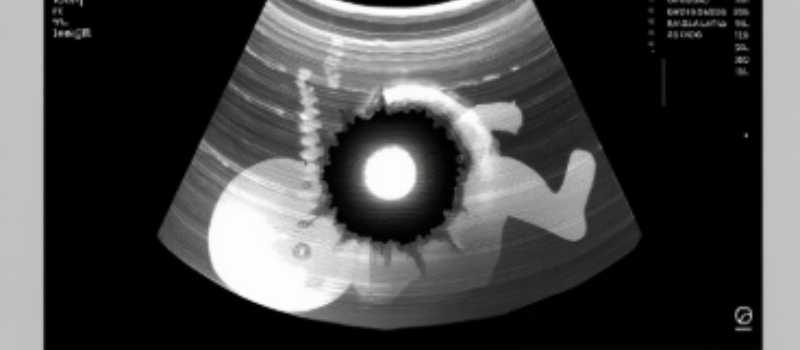
We saw our baby before we heard our baby. The room was dim, cool, all quiet whirs and soft beeps. On the screen, the spine appeared first—white pearls threaded in a graceful arc—until the pearls slipped apart. A small darkness opened where brightness should have been, a pause in the music of bone. I felt the air leave my chest like a door pulled shut. David’s hand found mine;
his fingers were cold and shaking, the way mine would be if I let go. The sonographer slowed her movements, measuring, capturing, circling with a dotted line that looked too much like a target. I stared at that gap and thought the most foolish thing: if I could touch it, maybe it would close. 🤲
The doctor came in with calm shoulders and a steady voice. “We see a discontinuity,” he said, “perhaps a lesion along the lower spine. Sometimes it’s treatable. We’ll take this step by step.” His mouth kept moving, but all I could hear was the watery thud of our baby’s heart.
I looked at the screen again. Our child floated in black velvet, flexing the tiniest hand as if counting. One, two, three—then a curl of fingers against the chest, a gesture so tender it felt like an answer. I didn’t know to what, only that it answered me. ✨
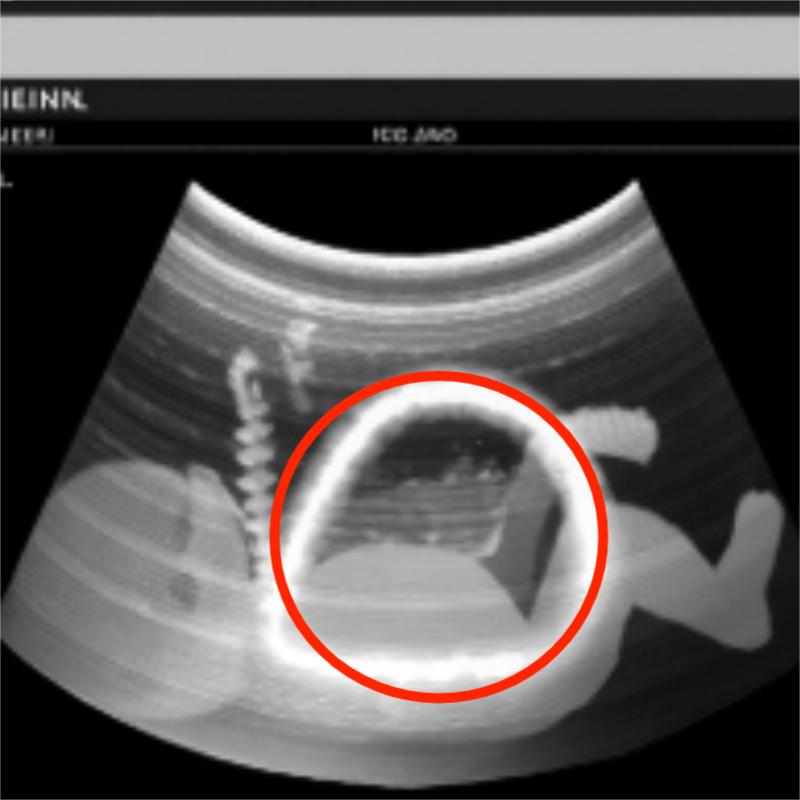 At home, we didn’t plan a nursery theme or fold tiny onesies into neat stacks. We learned new words. Neural tube. Sacral. Closure. We pinballed between hope and fear and strange, clinical brightness. I slept on my side, one hand on my belly, whispering to the small swimmer inside: I’m here. I won’t blink. I won’t miss a beat. David read studies aloud until the words became river sounds. The world narrowed to appointments, measurements, the architecture of weeks.
At home, we didn’t plan a nursery theme or fold tiny onesies into neat stacks. We learned new words. Neural tube. Sacral. Closure. We pinballed between hope and fear and strange, clinical brightness. I slept on my side, one hand on my belly, whispering to the small swimmer inside: I’m here. I won’t blink. I won’t miss a beat. David read studies aloud until the words became river sounds. The world narrowed to appointments, measurements, the architecture of weeks.The second scan was on a different machine, larger, its interface resembling a cockpit. The spine appeared again, white beads along a riverbank. The gap was still there—only now it seemed to shift, like a door trying to decide whether to be open or closed. The doctor adjusted angles, increased depth, changed probes.
“There’s an acoustic shadow interfering,” he murmured. “But we can’t assume artifact. We prepare for both.” He drew diagrams: delivery in a specialized unit, neonatal surgery if needed, the choreography of teams and minutes. I nodded, memorizing each step like a dance whose music I didn’t yet know. 💙
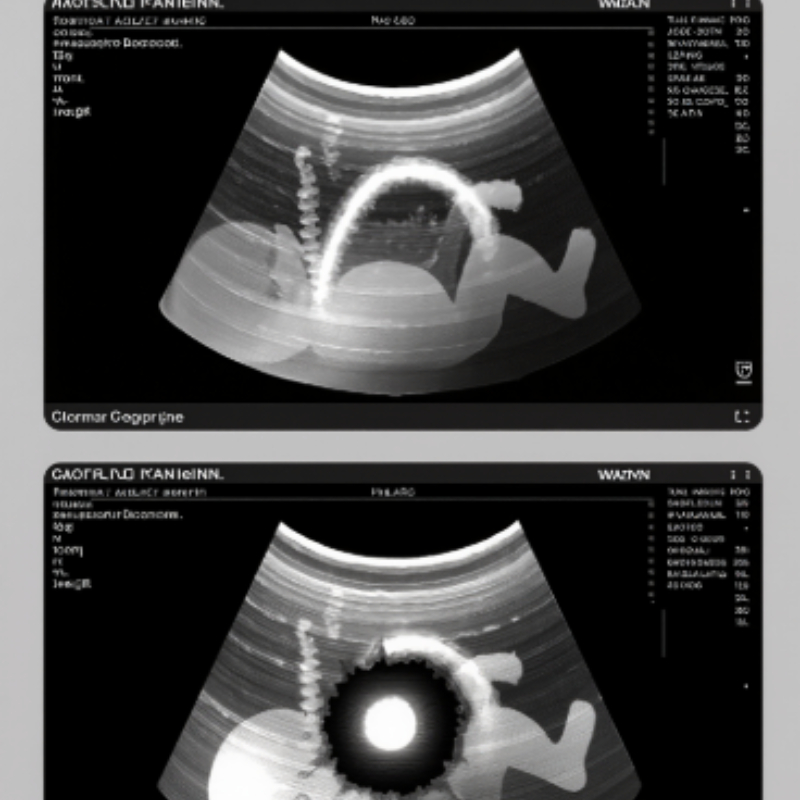
At night, when the house went quiet, the ceiling turned into a projection of everything we’d seen. The dotted circle pulsed like a moon. David lay beside me, hands folded over mine. “He’s strong,” he whispered. “Look how he moves.” Our baby did move, a slow tumble, then a small kick that sent a ripple across my stomach. The movement felt like a promise—I didn’t know what kind, only that it had the weight of truth. We chose a name we kept secret between us, the shape of it like a pebble in the pocket, warm from touch.
Week twenty-two. The images grew sharper; the baby grew angles. The placental lake looked like a halo. The spine brightened like a road at dawn. And always, the pause—a short break in the line. The surgeon met us in a room with a frosted window, hands warm, eyes straightforward. “If there’s an open lesion, we’ll protect the area at birth and plan early repair,” she said. “We’re better at this every year.” She smiled, not the smile that says don’t worry, but the one that says I’ll be there when you do. I carried that smile home like a lantern. 🕯️
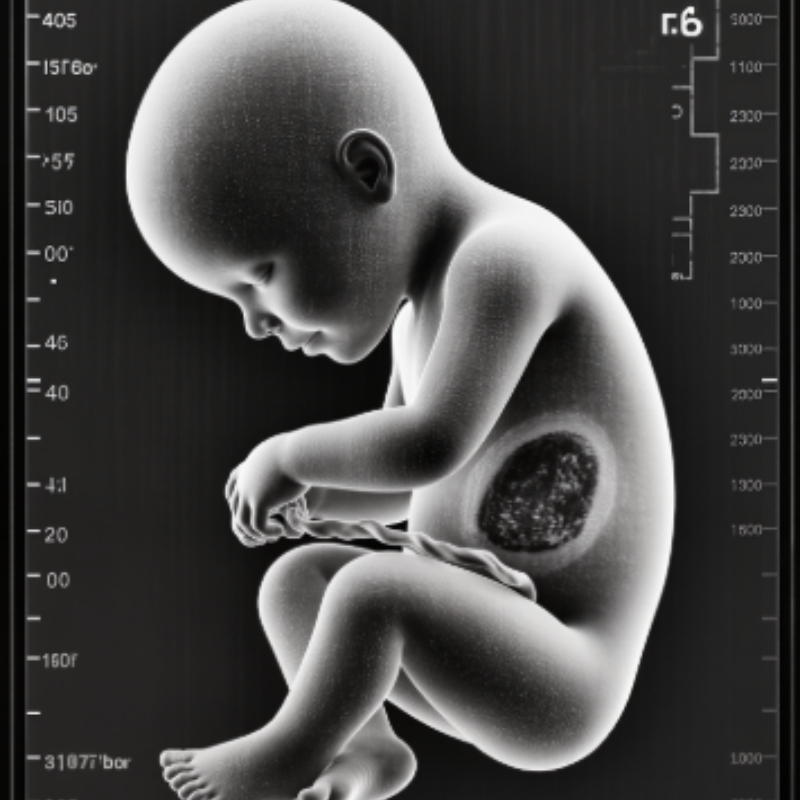
On the night my labor began, rain stitched itself across the city. The drive felt like a crossing—darkness outside, warmth inside, the car a narrow world. When we reached the unit, everything moved quickly but without rush. Names were spoken like passwords. Hands lifted, steadied, measured. I surrendered to the rhythm: breath, pressure, breath, release. Someone pressed my shoulder and said, “Almost there,” and it was true.
He cried the moment air touched him. The sound was fierce, not a plea but an announcement. I cried too, from somewhere old and wordless. I saw only his face, wrapped and luminous, the nose that looked like David’s, the tiny lips already learning vowels. “Protect the spine,” someone said, and a team gathered in choreography, soft and precise. They covered the lower back with a sterile dressing and moved as if carrying light.

We were allowed a brief quiet. He lay on his side in a warmed bassinet, and I pressed two fingers to his palm. He wrapped his whole hand around them, uncomplicated and absolute. A nurse took a quick picture: our son’s profile framed by the arc of my arm, the dressing like a tiny snowfield across his lower back. In the photo, he looked like he was listening.
Then came the battery of images, the serious ones. We waited in a room painted with whales that looked like punctuation marks. The minutes stretched until they forgot they were minutes. David told me to drink water. I didn’t know how. When the door finally opened, the surgeon and the neonatologist entered together. I braced for the verdict, fingers cinched around the bed rail.
“Your son is stable,” the surgeon said. “We need one more scan. Then we’ll know if we repair now or later.”
In the last scan—one more machine, one more monitor—the gap looked different. The sonographer frowning, then adjusting, then frowning again. “I need to try one thing,” she murmured. She repositioned our son on his side, lifted his tiny leg with astonishing gentleness, and angled the probe along a narrow corridor of sound. The image sharpened. The beads of the spine lined up, one after the other, unbroken. Where the darkness had opened before, light threaded through like a needle. The room stayed silent long enough for me to believe it, and then the sonographer laughed, a soft breath of disbelief.
“It’s not a lesion,” she said. “It’s an artifact. An acoustic shadow.”
The neonatologist exhaled with his whole body. The surgeon leaned in to confirm, tracing the white line with a gloved finger on the screen. “The shadow was cast by something maternal,” she said carefully, “likely the hardware from your scoliosis surgery years ago. The angles we used during pregnancy kept catching it right here.” She tapped the place where fear had lived for months. Relief did not arrive like a trumpet. It arrived like tidewater, slow and certain, pulling broken shells back to sea. I began to laugh and cry at once. David bent over our son’s blanket and whispered, “You trickster. You little comet.” 🌈
They removed the dressing. The skin was intact—unmarked except for a faint, dusky smudge, the kind of birthmark that looks like a thumbprint left by someone you trust. We touched nothing, as if the air itself might erase the blessing. The team drifted away, leaving us to the quiet we hadn’t allowed ourselves to imagine.
In the weeks that followed, sleep came in whittled pieces and joy in sudden floods. Sometimes at 3 a.m., when the neighborhood was tuned to its deepest frequency, I’d hold him against my shoulder and listen to his tiny breaths. I thought about the months of diagrams and checklists, the moons of dotted measurement, the white beads of the spine that would not give up being whole. I thought about shadows that look like truth and truths that learn to outrun shadows. 🌙
When he was three months old, we returned to the clinic for a final follow-up. The sonographer asked if we wanted a keepsake print from the first week—the kind with the big black crescent of the uterus and the tiny swimmer curled like a comma. She printed one and handed it over. On the film, our son was a silhouette, limbs folded, head bowed in concentration. And there, faint but visible, was the old gap—the shadow that had taught us how to breathe through a held note. On the back, in careful block letters, she wrote: artifact, resolved. I slipped the picture into my bag and felt lighter for the extra weight. 📷
The twist came later, when we sent the photo to our families. My mother wrote back first. She sent a picture of me at twenty weeks, a film scan from a different decade, different machine. In the same place—same angle, same arc—a small darkness interrupted the line of light. She had circled it with a blue pen, frightened and young, and then never told me. “It was nothing,” she wrote. “They said it was shadow. I kept the picture to remember how big ‘nothing’ can feel.”
I placed the two films side by side on the table: mine and my son’s, our shadows aligned like a quiet inheritance. David stood behind me and rested his chin on my head. “Maybe he didn’t inherit a flaw,” he said. “Maybe he inherited the trick that shows us where the light is.
” I looked at our boy sleeping on the couch, a perfect curve tucked into himself, and understood. The gap had been a door that taught us how to walk through. The triumph was not that the line was perfect; it was that we loved him wildly when we thought it wasn’t. And that love, once learned, does not bend back. It only brightens. 💫🫶🏻
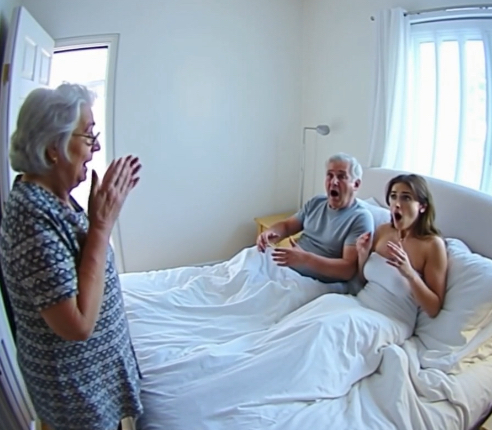
That night, sleep eluded me. I lay in the darkness, the weight of betrayal pressing down, feeling like an anchor tethered to my chest. My mind was a storm of thoughts, swirling and crashing, yet I remained silent. I refused to give them the screams, the tears, the satisfaction of my brokenness. Instead, I embraced the quiet and let it fill me, hardening into resolve.
The house was still, save for the occasional creak of the settling wood. Outside, crickets droned on, oblivious to the tempest inside. I shifted, staring at the ceiling, mapping out constellations of revenge and justice in the shadows above. As the hours ticked by, the silence morphed from a shield into a weapon.
Morning arrived, draping the room in soft light. I rose, feeling the weight of what needed to be done. In the kitchen, I moved with deliberate purpose. The scent of coffee filled the air, the familiar ritual grounding me. I prepared breakfast, the sounds of sizzling bacon and the kettle’s whistle surprisingly soothing amid the chaos.
Logan appeared at the kitchen door, his eyes heavy with fatigue and something else—guilt, perhaps? He opened his mouth to speak, but I silenced him with a single glance. My silence, potent and palpable, hung between us like a third presence.
“Claire, about last night—” he began, his voice faltering under the weight of my gaze.
“I think it’s best you pack some things,” I interrupted, my tone calm, steady. “You need to leave.”
His mouth opened and closed, words failing him. “We need to talk about this,” he insisted, though his voice lacked conviction.
I shook my head slowly. “There’s nothing left to say, Logan. Your actions spoke volumes.”
He lingered, as though searching for the right words to sway me, but found none. Eventually, he nodded, resigned, and turned away, his footsteps heavy as they retreated down the hallway.
In the quiet that followed, I felt a strange sense of peace. It wasn’t the end, I knew. There would be more conversations, more confrontations. But this was the beginning—a reclaiming of my life, my dignity.
I thought of Madison, of her youth and her audacity. It was time for a different conversation, one that needed to be had not in anger, but with clear-eyed intent. Picking up my phone, I dialed my daughter’s number, the one person who deserved to know the truth from my lips.
As the phone rang, I steeled myself, ready to navigate the path ahead. They had underestimated me, mistaking silence for weakness. But silence, as they would learn, is a formidable force. It speaks the truth in the spaces where words falter, and it lays the groundwork for new beginnings.
The click of the call connecting was like a bell tolling, marking the start of something new. The aftermath of betrayal was not where my story ended; it was where a new chapter truly began.
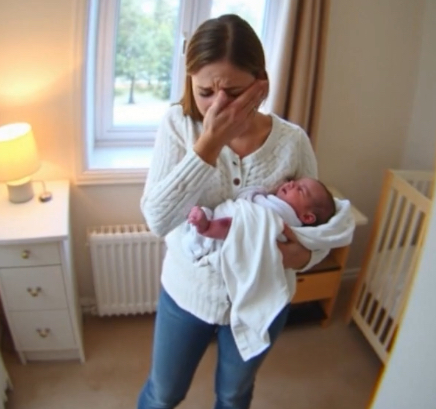
Samantha could hardly breathe as she watched the scene unfold on her phone screen. The stranger was a man, dressed casually in jeans and a sweatshirt, moving with an unsettling familiarity. He leaned over Oliver’s crib, his fingers lightly brushing the baby’s leg where she had noticed the peculiar marks. Her heart pounded, a mix of fear and anger swirling within her. She felt an overwhelming urge to storm into the nursery, to protect little Oliver with everything she had. But she knew she needed more evidence, clarity on what was happening.
The man lingered for a few moments, glancing around as though ensuring he wasn’t being watched. Then, he did something that sent chills down Samantha’s spine — he reached into his pocket and pulled out a small, metallic object. It was a branding tool, the kind used for marking animals, and Samantha realized with horror that it was the source of the marks on Oliver’s tender skin. Her mind raced, trying to comprehend the motive behind such a cruel act. Was this man trying to make a statement, or was he inflicting harm for some twisted gratification?
As quickly as he had appeared, the man slipped out of the nursery, closing the door softly behind him. Samantha sat frozen, her mind a whirlpool of thoughts. She had to act, but she needed to approach this delicately. Her priority was Oliver’s safety, but she also needed to ensure that the stranger was apprehended without tipping him off prematurely.
First, she called Emily. Her voice was steady, though every muscle in her body was taut with anxiety. “Emily,” she said, “there’s something urgent we need to discuss. Can you come home now?”
Emily, sensing the gravity in Samantha’s tone, promised to leave her office immediately. Meanwhile, Samantha called the police, explaining the situation and sharing the footage she had captured. They assured her that they would send officers to the house right away.
True to her word, Emily arrived at the house within the hour, her face lined with worry. Samantha ushered her into the living room, where she replayed the footage. Emily’s eyes widened in horror as she watched the stranger enter her child’s nursery, her hands flying to her mouth in shock.
By the time the police arrived, Samantha and Emily had formulated a plan. The officers took statements, and Samantha handed over the recording. They assured the women that they would do everything possible to identify and catch the intruder.
In the days that followed, the story took a surprising turn. The police discovered that the man was an ex-employee of Daniel’s, someone who held a grudge after being fired months earlier. His intent was to unsettle and intimidate, though the exact reasons behind his fixation on Oliver remained disturbingly ambiguous.
The incident brought Emily, Daniel, and Samantha closer together, united by the shared goal of protecting Oliver. They installed a state-of-the-art security system, including additional cameras throughout the house, and Daniel made the decision to work outside the home to ensure no further breaches of their sanctuary.
Samantha remained with the family, her bond with Oliver stronger than ever. Though the experience had shaken them all, they were determined to move forward, grateful for the vigilance and courage that had kept their little boy safe.

Dr. Daniel Harris sat in his office, the DNA results still clutched in his hands, his mind an entangled mess of disbelief and horror. How could this be? He never crossed that line. He couldn’t have. But there it was in black and white—the undeniable truth. The child growing inside Emily Foster was his.
Emotions crashed over him like a tidal wave—shame, confusion, and a deep, gnawing fear of the unknown. Yet, interlaced with these emotions was a faint flicker of memory, a hazy recollection like the remnants of a dream. Could it be possible? Could he have been drugged or manipulated? Daniel knew he had to find answers, not just for himself but for Emily and the innocent life she now carried.
Though his immediate instinct was to lock himself away, he understood the gravity of the situation demanded transparency. It was no longer just about him. He had taken an oath to protect his patients, a promise now tainted by this unfathomable breach. He had to step into the raging storm and seek the truth.
Dr. Harris reached out to the hospital’s administration, requesting an immediate and thorough investigation into his own actions, as surreal as they seemed. He demanded they check security footage, interview staff, and even examine hospital access logs. He had to believe that some explanation existed beyond what the evidence suggested.
Meanwhile, he resolved to stay by Emily’s side, doubling his efforts to ensure her safety. His heart ached with a protective instinct he couldn’t quite explain. He spoke to her even more now, reading aloud from books and playing her favorite music, hoping to reach her somehow, somewhere beyond the veil of her coma.
As the investigation unfolded, whispers and speculations swirled through St. Mary’s Hospital like a gathering storm. Dr. Harris faced the judgment of his peers and the skepticism of those who had once trusted him implicitly. Yet amidst the chaos, a quiet support emerged from unexpected corners—nurses who had worked alongside him, patients who remembered his kindness, and even Julia, the ultrasound technician, who believed in his integrity.
Weeks stretched on as the investigation delved deeper, each day a trial for Daniel. He found solace in the routine of caring for Emily, an anchor amidst the turbulent seas. He read every medical article he could find about coma patients, hoping to unlock the secret behind her mysterious pregnancy.
Then, one evening, when the hospital was cloaked in night’s quiet embrace, a breakthrough came. Security footage from three months prior revealed a stranger, a man in scrubs who didn’t belong—an intruder who had accessed the ICU under the guise of a medical professional. The man’s face was captured clearly, and it wasn’t long before investigators linked him to several other unsolved cases from other hospitals.
Relief and horror mingled inside Dr. Harris. The nightmare hadn’t been of his making, but the burden had been his to bear. Emily’s violation was a shared tragedy, one that had drawn the hospital staff into a closer, supportive community.
As the truth emerged, Emily’s story touched the heart of many. Offers of support poured in from every direction, a testament to her resilience and the new life she carried. For Dr. Harris, it was a complex journey from despair to hope, a reminder of the profound responsibility of care—a lesson that would shape him forever as a doctor and a human being.
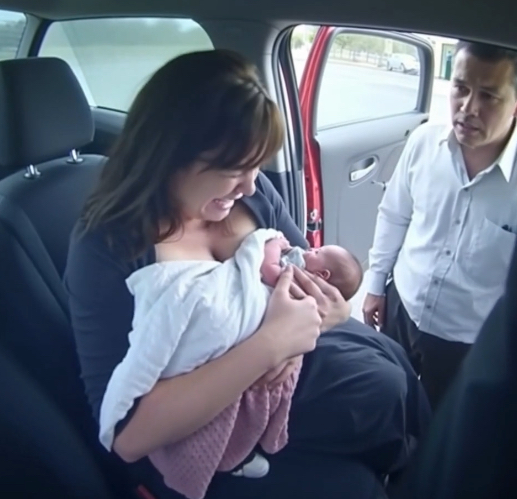
Feeling a mix of disbelief and hurt, I knew I couldn’t wait any longer. The contractions were coming fast and strong now, each one feeling like a tidal wave crashing over me. I fumbled for my phone, ignoring my family’s dismissive presence around me. With trembling hands, I opened the Uber app and requested a ride. It was surreal, standing there in my parents’ kitchen with my life about to change forever, and yet being treated as if I were merely an inconvenience.
The car arrived within minutes. I managed to make my way outside, each step a painful reminder of the urgency of my situation. The driver, a middle-aged woman with kind eyes, seemed to understand immediately. “Hospital, right?” she asked, glancing back at me through the rearview mirror.
“Yes, please,” I gasped, settling into the back seat and trying to find a position that offered some relief from the intense contractions. I was grateful for her understanding, for her presence that seemed to offer the compassion I was so desperately missing from my own family.
The ride was a blur of pain and anxiety. I focused on my breathing, clutching the headrest in front of me as the contractions came closer and closer together. The driver kept the conversation light, trying to distract me, telling me about her own kids and reassuring me that everything would be okay. Her words were a balm, soothing the raw edges of my fear and loneliness.
But then, it happened. With one powerful contraction, I felt an overwhelming pressure followed by an instinctive push. The driver’s eyes widened in the mirror. “Oh my God, you’re having the baby now!”
Before I knew it, I was caught up in the primal rhythm of childbirth, my body taking over in a way that was both terrifying and miraculous. The driver pulled over to the side of the road, her voice a steady guide as she called for an ambulance. In those moments, I was aware of nothing but the life that was making its way into the world. All thoughts of my family, of their betrayal and indifference, faded away. It was just me and my baby, the world contracting to that singular focus.
And then, with one final push, it was over. The air was filled with the sound of a newborn’s cry, a sound that was both ancient and new, a testament to life’s relentless continuity. The driver wrapped the baby in her jacket, her eyes shining with unshed tears. “You did it,” she whispered, handing my child to me. “You’re both okay.”
Relief and joy surged through me as I cradled my baby against me, feeling the warmth of this tiny, miraculous life. In that moment, I knew that whatever happened next, I had the strength to face it.
The ambulance arrived soon after, and the paramedics took over, but I held tightly to my child, unwilling to let go even for a second. Days later, when my parents called and asked to meet their grandchild, I realized that I had a choice. I could let their indifference continue to hurt me, or I could choose to build a life centered around the love and connection I wanted for myself and my baby.
As I looked into my child’s eyes, I knew what my answer would be.
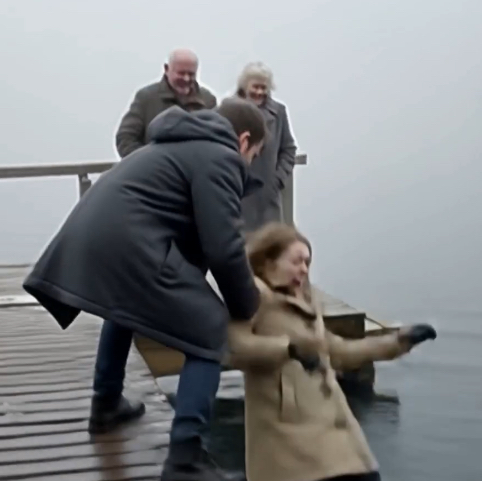
As I stood on the empty pier, the chill of the evening air seeped through my clothes, leaving a damp residue of dread in its wake. The water, which had swallowed Milina so eagerly, now lay still, as if it hadn’t just tried to claim her. The memory of the laughter echoed in my ears, each chuckle a cruel jab at the fear that had surged through my veins.
Preston, my son-in-law, and his family had always had a peculiar sense of humor. They liked to test boundaries, pushing limits as if daring the world to push back. But this time, they’d gone too far. The image of Milina, flailing for a moment before slipping beneath the icy surface, was seared into my mind.
The stranger who had helped us vanished as quietly as he had appeared, leaving no trace of his presence but the damp spot on the pier where he had knelt. His kindness, a stark contrast to the callous indifference of Preston and Garrett, was a small balm to my frayed nerves.
In the hours that followed, I found myself sitting in the hospital waiting room, the sterile smell of antiseptic clinging to my nostrils. Nurses moved in and out, their expressions a practiced neutrality. I sat hunched in a plastic chair, phone clutched tight, waiting for an update on Milina’s condition.
A doctor finally approached, his face weary but gentle. “She’s stable for now,” he said. “We’ll know more once she’s warmed up and conscious. The concussion is a concern, but she’s young and strong.”
I nodded, my relief tinged with a simmering anger. It boiled just beneath the surface, a latent energy that colored my thoughts. The memory of my call to my brother lingered in my mind, a decision made in the heat of desperation.
He was the kind of man who thrived in shadows, who moved within the hushed silence of debts and favors. We hadn’t spoken in over a decade, each of us caught in the webs of our respective lives. Yet, when I called him, there had been no hesitation. He knew what I needed.
As the hours passed, I replayed the events, dissecting every moment. I pictured Preston and Garrett returning to their home, smug in their assumption of impunity. Imagining their faces when the reality of their actions caught up with them was a small comfort.
When the nurse finally allowed me to see Milina, she lay pale against the white sheets, a bandage wrapped around her head. Her eyes fluttered open at my approach, confusion giving way to recognition, and then, relief.
“Mom,” she breathed, her voice barely a whisper.
“I’m here, sweetheart,” I replied, taking her hand in mine. “You’re safe now.”
Outside, the sky had darkened completely, the stars gleaming coldly above. Somewhere far away, the consequences were unfurling, a chain reaction set into motion by a whispered request. I could only hope that justice, however unconventional, would find its mark.
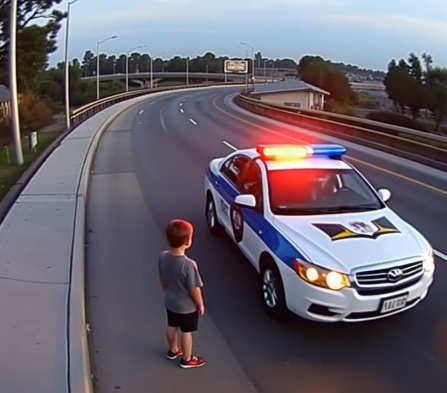
As the police officer carried the trembling child back to his patrol car, he couldn’t help but feel a mix of emotions—concern, compassion, and a burning desire to uncover the child’s story. The boy clung to him, seeking comfort and safety in the officer’s arms. Once at the patrol car, the officer wrapped him in a warm blanket, trying to offer some semblance of comfort and security.
At the station, the doctors quickly attended to the boy. Though his condition elicited concern, their examination revealed no serious injuries—just signs of neglect and exposure. Meanwhile, the police department sprang into action, taking photographs and distributing them across social media and the police database with a simple message: Help us identify this child.
As the hours passed, the community rallied together, sharing the post, each share widening the net of possible recognition. It wasn’t long before a call came in from a frantic aunt who recognized the boy as her nephew, Joey. Her voice quavered with relief and fear as she explained that Joey had been missing for over three days after having been left in the care of a trusted family friend.
When Joey’s family arrived at the station, their reunion was emotional and tearful. His mother embraced him, apologizing over and over, her words a mixture of love and remorse. But it was what they revealed during their conversation with the police that turned this case into something even darker.
According to Joey’s family, he had been staying with a family friend while his parents attended a weekend work conference out of town. The friend, someone they had known and trusted for years, was supposed to be a responsible guardian. However, it soon became apparent that this trust had been gravely misplaced.
The officers learned that the friend, overwhelmed by personal issues and unable to cope with the responsibility, had abandoned Joey without informing anyone. Unbelievably, she had left him in a small park near the highway, assuming that someone would find and help him. For three days, Joey had wandered alone in search of food and shelter. The fact that he had survived was nothing short of miraculous.
The police immediately launched an investigation into the friend’s actions. In the meantime, Joey’s story spread like wildfire through the community, sparking outrage and an outpouring of support for the young boy and his family. Offers for clothing, food, and financial aid poured in, as did offers from counselors and therapists volunteering their services to help Joey process the trauma he had endured.
The incident became a catalyst for broader discussions about child welfare and the importance of community vigilance. Neighbors pledged to look out for one another more diligently, and various organizations began campaigns to raise awareness about child neglect and the importance of intervention.
As for Joey, he gradually began to heal, supported by his family’s love and the community’s generosity. His story, though heartbreaking, became a symbol of resilience and the power of a community to come together in times of crisis. The police officer who found him kept in touch, becoming a family friend and a reminder of the good that can arise from the darkest situations.
 Top Video Viral
Top Video Viral